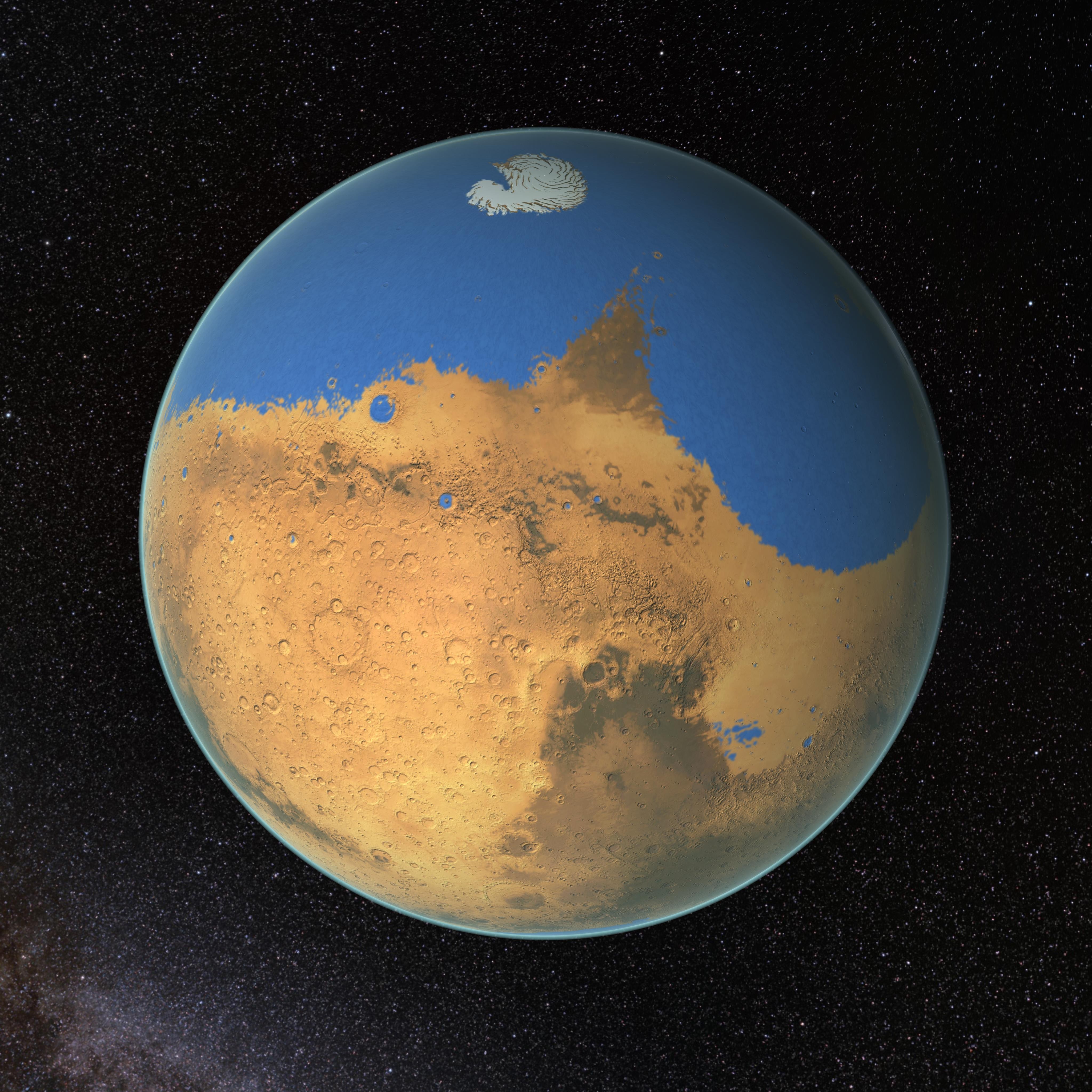 Mars once held more water than Earth Credits: NASA/GSFC
Mars once held more water than Earth Credits: NASA/GSFC
NASA scientists, using data from ground-based telescopes, have discovered that Mars once possessed significantly more water than it does today. This ancient Martian ocean, estimated to have existed roughly 4.3 billion years ago, is thought to have contained more water than Earth’s Arctic Ocean. A key question for researchers is how much water Mars had compared to Earth and where it all went.
Quantifying the Lost Ocean of Mars
Researchers have determined that Mars has lost a staggering 87% of its water to space. This conclusion comes from analyzing the ratio of two forms of water in Mars’ atmosphere: regular water (H2O) and heavy water (HDO), where a hydrogen atom is replaced by deuterium. By comparing this ratio to that found in a Martian meteorite dating back 4.5 billion years, scientists could calculate the amount of atmospheric water loss over time.
This map shows the global distribution of HDO, a heavier form of water, in the Martian atmosphere. Credit: NASA/JPL-Caltech/GSFC
Early Mars likely held enough water to cover its entire surface in a liquid layer approximately 450 feet (137 meters) deep. However, it’s more plausible that the water formed an ocean covering nearly half of Mars’ northern hemisphere, with some areas reaching depths exceeding a mile (1.6 kilometers). This lost ocean represents a volume 6.5 times larger than the current water volume held in Mars’ polar ice caps.
Locating the Ancient Ocean
The Northern Plains of Mars, with its low-lying terrain, is considered the most probable location for this ancient ocean. If situated there, the ocean would have covered about 19% of the Martian surface, comparable to the Atlantic Ocean’s 17% coverage of Earth’s surface. This suggests a significant period of time where Mars may have been a much wetter and potentially habitable planet.
Implications for Martian Habitability
The presence of a vast ocean on early Mars for a potentially extended period significantly alters our understanding of the planet’s history and potential for past life. A longer period of wet conditions could have provided more favorable circumstances for the development and sustenance of life.
Continued Exploration of Martian Water
NASA’s ongoing Mars Exploration Program utilizes various spacecraft and rovers, such as the Curiosity and Perseverance rovers, to study the planet’s current and past environments. Missions like MAVEN analyze the Martian atmosphere, while future endeavors like the planned Mars Sample Return mission will collect samples for analysis on Earth, providing further insights into the planet’s water history. This continuous exploration aims to uncover the mysteries of Mars’ watery past and its potential for past or present life.